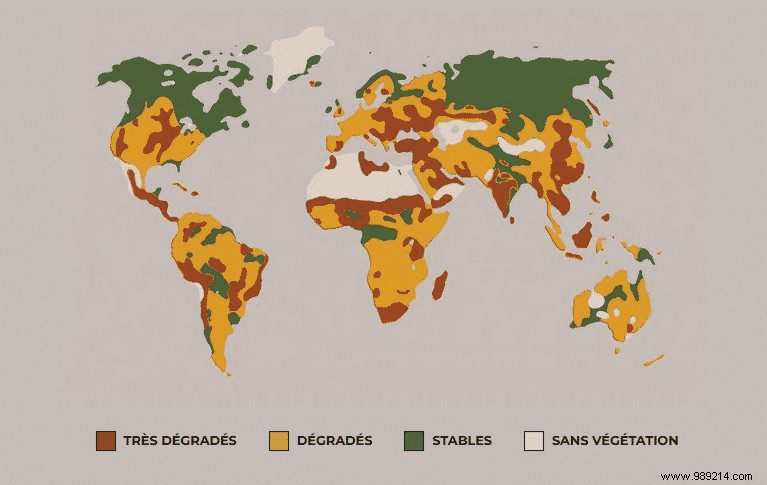The Save Soil Movement highlights the fact that today most people are quite familiar with the terms and concepts of climate change, carbon emissions, CO2, atmospheric pollution or water shortages. On the other hand, the general public has much less knowledge about soils.
As its name suggests, the US-based NGO Save Soil Movement raises awareness about soil. Supported by the UN and many partners, the association has defined three major objectives :
– Getting humanity to pay attention to soils , whose decline is inevitable.
– Attempt to inspire 3.5 billion people, or 60% of the global electorate , with the aim of supporting policy shifts aimed at safeguarding, nurturing and sustaining soils.
– Making policy changes at the national level in no less than 193 countries to increase and maintain soil organic content at a minimum of 3 at 6% .
Save Soil Movement has also drawn up a soil map (see below). The latter shows that a majority of the soils of our planet are either degraded or very degraded . However, all continents are affected by the problem.

The Save Soil Movement website explains why soils are important. A mini-quiz tests the basic knowledge of Internet users on the subject. The questions relate in particular to the composition of the soil , the dependence of life on the soil, carbon storage, the fresh water present in the soil or the link to agriculture and food security. We learn that soils are made up of sand and organic matter, that 87% of life depends on soils or that they store three times more carbon than plants.
In addition, the water present in the soil represents about 65% of fresh water on earth. Also, the microbes living in the soil absorb pollutants and thus contribute to the cleanliness of the air. In addition, no less than 95% of the human diet comes from valuable farmland.
The current conflict in Ukraine was in particular an opportunity to recall the depletion of soils in organic matter. This country is one of the last to benefit from a very rich and fertile soil:the tchernozems (black earth), whose humus content is from 3 to 15% . However, even these exceptional lands, among the most fertile and resistant in the world, are subject to degradation, the latter being characterized mainly by a decrease in the level of organic matter .